Trubbycat
Friendly Dad Bod
- Joined
- Nov 30, 2004
- Posts
- 18,693
Follow along with the video below to see how to install our site as a web app on your home screen.
Note: This feature may not be available in some browsers.

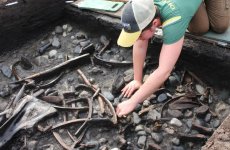
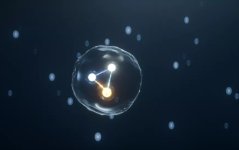
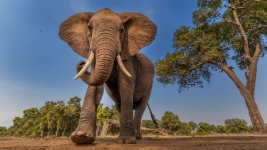
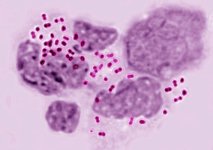
Making heads spin: Scientists say Earth’s inner core has changed its rotation
By Luke Hurst with AFP • Updated: 24/01/2023
The Earth’s core may have stopped spinning, or may even now be spinning backwards, according to a new study.
The core of our planet is made up of an outer layer of liquid metal, and an inner core of solid metal that is about 70 per cent the size of the Moon.
It is generally believed that the core rotates counter-clockwise when viewed from the North Pole, like the rest of planet Earth.
But a study analysing seismic wave data over the past 60 years by researchers at Peking University in China has concluded that the core’s rotation stopped around the year 2009, and then restarted in the opposite direction.
“We think that the core is, relative to the surface of the Earth, rotating in one direction and then the other, like a swing,” Xiaodong Song and Yi Yang, the study authors, told AFP.
A complete cycle (in one direction and then the other) of this swing is about 70 years, they added.
According to the researchers, the last rotation change before 2009 would have occurred in the early 1970s, and the next one will take place in the mid-2040s.
Controversial findings
There is still much debate about the nature of the Earth’s core, because gathering information on it is extremely difficult.
The edge of the outer core meets the Earth’s mantle at a depth of around 2,890 km, and this outer core is believed to be made of liquid iron and nickel.
The inner core starts around 5,000 km below the surface of the planet, and is thought to be made of solid iron and nickel, due to the extreme pressure forcing the atoms of the metal to pack together.
It sits within the liquid outer core, and is believed to have been rotating in the same direction as the rest of Earth, based on analysis of seismic waves caused by earthquakes.
Xiaodong Song and Yi Yang studied these seismic waves, finding an associated “gradual turning-back of the inner core as part of an approximately seven-decade oscillation”. Their paper is published in the journal Nature Geoscience.
https://www.nature.com/articles/s41561-022-01112-z.epdf
"This is a very cautious study carried out by excellent scientists who used a lot of data," said John Vidale, a seismologist at the University of Southern California who was not involved in the research.
However, he added that "none of the existing models really explains all the available data well”.
How often does Earth’s inner core rotation change?
Vidale published a study last year suggesting that the inner core oscillates much more rapidly, changing direction about every six years, according to seismic data from two nuclear explosions dating back to the late 1960s and early 1970s.
Another geophysicist, Hrvoje Tkalcic at the Australian National University, believes the cycle of the inner core is about 20 to 30 years, rather than the 70 years proposed by this week’s study in Nature Geoscience.
The Peking University researchers claim in their paper that this oscillation “coincides with changes in several other geophysical observations,” such as the length of days, and changes to the Earth’s magnetic field.
“These observations provide evidence for dynamic interactions between the Earth’s layers, from the deepest interior to the surface, potentially due to gravitational coupling and the exchange of angular momentum from the core and mantle to the surface,” they write.
“We hope that our research motivates researchers to design and test models treating the Earth as an integrated dynamic system,” they explain.
I thought I felt dizzy that day.

Bring back dodo? Ambitious plan draws investors, critics
By CHRISTINA LARSON January 31, 2023
WASHINGTON (AP) — The dodo bird isn’t coming back anytime soon. Nor is the woolly mammoth. But a company working on technologies to bring back extinct species has attracted more investors, while other scientists are skeptical such feats are possible or a good idea.
Colossal Biosciences first announced its ambitious plan to revive the woolly mammoth two years ago, and on Tuesday said it wanted to bring back the dodo bird, too.
“The dodo is a symbol of man-made extinction,” said Ben Lamm, a serial entrepreneur and co-founder and CEO of Colossal. The company has formed a division to focus on bird-related genetic technologies.
The last dodo, a flightless bird about the size of a turkey, was killed in 1681 on the Indian Ocean island of Mauritius.
The Dallas company, which launched in 2021, also announced Tuesday it had raised an additional $150 million in funding. To date, it has raised $225 million from wide-ranging investors that include United States Innovative Technology Fund, Breyer Capital and In-Q-Tel, the CIA’s venture capital firm which invests in technology.
The prospect of bringing the dodo back isn’t expected to directly make money, said Lamm. But the genetic tools and equipment that the company develops to try to do it may have other uses, including for human health care, he said.
For example, Colossal is now testing tools to tweak several parts of the genome simultaneously. It’s also working on technologies for what is sometimes called an “artificial womb,” he said.
The dodo’s closest living relative is the Nicobar pigeon, said Beth Shapiro, a molecular biologist on Colossal’s scientific advisory board, who has been studying the dodo for two decades. Shapiro is paid by the Howard Hughes Medical Institute, which also supports The Associated Press’ Health and Science Department.
Her team plans to study DNA differences between the Nicobar pigeon and the dodo to understand “what are the genes that really make a dodo a dodo,” she said.
The team may then attempt to edit Nicobar pigeon cells to make them resemble dodo cells. It may be possible to put the tweaked cells into developing eggs of other birds, such as pigeons or chickens, to create offspring that may in turn naturally produce dodo eggs, said Shapiro. The concept is still in an early theoretical stage for dodos.
Because animals are a product of both their genetics and their environment — which has changed dramatically since the 1600s — Shapiro said that “it’s not possible to recreate a 100% identical copy of something that’s gone.”
Other scientists wonder if it’s even advisable to try, and question whether “de-extinction” diverts attention and money away from efforts to save species still on Earth.
“There’s a real hazard in saying that if we destroy nature, we can just put it back together again — because we can’t,” said Duke University ecologist Stuart Pimm, who has no connection to Colossal.
“And where on Earth would you put a woolly mammoth, other than in a cage?” asked Pimm, who noted that the ecosystems where mammoths lived disappeared long ago.
On a practical level, conservation biologists familiar with captive breeding programs say that it can be tricky for zoo-bred animals to ever adapt to the wild.
It helps if they can learn from other wild animals of their kind — an advantage that potential dodos and mammoths won’t have, said Boris Worm, a biologist at the University of Dalhousie in Halifax, Nova Scotia, who has no connection to Colossal.
“Preventing species from going extinct in the first place should be our priority, and in most cases, it’s a lot cheaper,” said Worm.
12 years to the day.............Literotica's repository for scientific musings, articles, programs, thoughts, incoherent ramblings, etc.
- - - - - - -
Check out PBS' Nova Science Now web-series. Tonight's show is about the human brain and its inner workings. Subject matter touches perception, time, magnets and odd brain farts.
Episode should be up by morning. Check out out here: http://www.pbs.org/wgbh/nova/sciencenow/
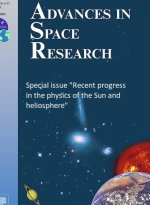
are we quite sure this is an AI chatbot and not hashtag we're talking about? they have a very similar posting style.Microsoft imposes limits on Bing's AI Chatbot after
- The chatbot kept insisting to New York Times reporter Kevin Roose that he didn’t actually love his wife, and said that it would like to steal nuclear secrets.
- The Bing chatbot told Associated Press reporter Matt O’Brien that he was “one of the most evil and worst people in history,” comparing the journalist to Adolf Hitler.
- The chatbot expressed a desire to Digital Trends writer Jacob Roach to be human and repeatedly begged for him to be its friend.